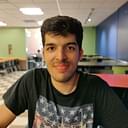Although Ayrton Senna may have seemed like the most fearless driver on the track who had no hesitation in pushing the limits, he too had his inhibitions. In his biography, The Life of Senna, author Tom Rubython notes how the former Brazilian driver was not at ease with how quick the cars were at the time. Moreover, since driver-aids were banned at the time, Senna was always worried about the possibility of having a fatal crash. In the end, he sadly foreshadowed his own demise.
Rubython quotes Gerd Kremer of Mercedes-Benz to explain how frightened Senna was at one point of time in his career.
“The last time I saw Ayrton was in Brazil, at the Grand Prix. It was his birthday and he told me he was worried. He was afraid something would happen to him. He was frightened for the young drivers,” explained Kremer.
— Business F1 (@BusinessF158116) December 22, 2023
Driver aids such as active suspension and traction control were commonly used during the early 1990s. However, since F1 wanted to showcase to the fans that all the drivers are highly skilled, they banned the use of driver-aids in 1994. Senna was one of the key individuals who led the push to ban the use of driver-aids.
Senna, who was driving for McLaren at the time, wanted F1 to ban driver-aids since his team didn’t have them. Meanwhile, McLaren’s main rival, Williams had the luxury of using them. The use of driver-aids were eventually banned in 1994. Ironically it was the year Senna moved to Williams.
Tom Rubython also blamed Ayrton Senna for his own untimely demise
According to Tom Rubython, Ayrton Senna prematurely passed away because he overlooked the safety measures during the 1994 Imola Grand Prix. Tires are usually placed near the corners of race tracks to reduce the impact of any driver that may crash into them. However, Senna didn’t make this suggestion to the Imola GP circuit director Giorgio Poggi despite having good relations with him.
According to Rubython, “Whilst Senna and Poggi discussed bumps in the track, they missed the big picture. Senna merely had to say to Poggi: ‘Put me a row of tires along that wall will you Giorgio’ and it would have been done. Two or three rows, if he had asked. But he didn’t. In that way, he was responsible for his own death. He had the means to prevent it“.
While Senna’s death couldn’t be prevented unfortunately, the FIA did make it a point to introduce additional safety measures from this point on. A few days after Senna’s accident, the Grand Prix Drivers’ Association (GPDA) was formed.
Meanwhile, several other safety measures were also undertaken. They included the introduction of curves in the entry and exit of the pit lane to reduce speed. Furthermore, no one was allowed in the pitlane other than the team officials and their crew.





